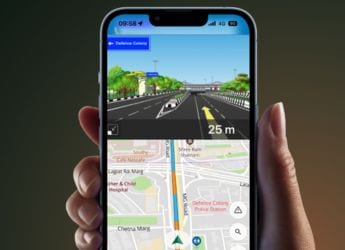- Home
- Transportation
- Transportation News
- Tesla Doubles Down on Camera Based Pure Vision Autopilot Amid Growing Scrutiny
Tesla Doubles Down on Camera-Based Pure Vision Autopilot Amid Growing Scrutiny
Tesla CEO Elon Musk tweeted to announce the rollout of Pure vision Autopilot in North America.

In October 2020, Tesla rolled out the test version of its new FSD system to a limited number of people
Tesla said on Tuesday it will drop a radar sensor in favour of a camera-focused Autopilot system for its Model 3 and Model Y vehicles in North America starting this month.
The move came amid growing scrutiny by regulators and media about the safety of what Tesla dubs "Autopilot" and "Full Self-Driving (FSD)" features, following a series of crashes.
"Pure vision Autopilot is now rolling out in North America," CEO Elon Musk said in a tweet.
He said it plans to release an improved "FSD beta V9.0" based on the pure vision system about three weeks later.
"FSD subscription will be enabled around the same time," he said.
In October, Tesla rolled out the test version of its new FSD system to a limited number of people, enabling cars to navigate on city streets in semi-autonomous mode as well as highways. A wider launch has been delayed.
While most companies like Waymo equip autonomous cars with cameras paired with sensors like lidars and radars, Tesla relied on cameras and one radar to detect and analyse objects.
Tesla's approach helped reduce costs and commercialise its driver assistant features, but experts and other companies have raised safety concerns.
Tesla said the transition to a camera-focused system may result in limitations of some features such as lane-centering and parking assistance, saying those functions will be restored via software updates "in the weeks ahead."
All new Model S and Model X cars, as well as all vehicles built for markets outside North America, will still be equipped with a radar, Tesla said.
A radar sensor uses radio waves and sensors to detect objects.
In March, Tesla told California regulators it might not achieve full self-driving technology by the end of 2021.
© Thomson Reuters 2021
Get your daily dose of tech news, reviews, and insights, in under 80 characters on Gadgets 360 Turbo. Connect with fellow tech lovers on our Forum. Follow us on X, Facebook, WhatsApp, Threads and Google News for instant updates. Catch all the action on our YouTube channel.
Related Stories
- Samsung Galaxy Unpacked 2025
- ChatGPT
- Redmi Note 14 Pro+
- iPhone 16
- Apple Vision Pro
- Oneplus 12
- OnePlus Nord CE 3 Lite 5G
- iPhone 13
- Xiaomi 14 Pro
- Oppo Find N3
- Tecno Spark Go (2023)
- Realme V30
- Best Phones Under 25000
- Samsung Galaxy S24 Series
- Cryptocurrency
- iQoo 12
- Samsung Galaxy S24 Ultra
- Giottus
- Samsung Galaxy Z Flip 5
- Apple 'Scary Fast'
- Housefull 5
- GoPro Hero 12 Black Review
- Invincible Season 2
- JioGlass
- HD Ready TV
- Laptop Under 50000
- Smartwatch Under 10000
- Latest Mobile Phones
- Compare Phones
- Honor Win RT
- Honor Win
- Xiaomi 17 Ultra Leica Edition
- Xiaomi 17 Ultra
- Huawei Nova 15
- Huawei Nova 15 Pro
- Huawei Nova 15 Ultra
- OnePlus 15R
- Asus ProArt P16
- MacBook Pro 14-inch (M5, 2025)
- OPPO Pad Air 5
- Huawei MatePad 11.5 (2026)
- Xiaomi Watch 5
- Huawei Watch 10th Anniversary Edition
- Acerpure Nitro Z Series 100-inch QLED TV
- Samsung 43 Inch LED Ultra HD (4K) Smart TV (UA43UE81AFULXL)
- Asus ROG Ally
- Nintendo Switch Lite
- Haier 1.6 Ton 5 Star Inverter Split AC (HSU19G-MZAID5BN-INV)
- Haier 1.6 Ton 5 Star Inverter Split AC (HSU19G-MZAIM5BN-INV)
















